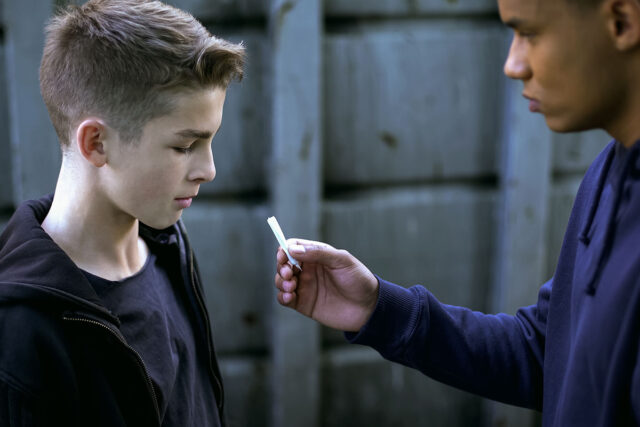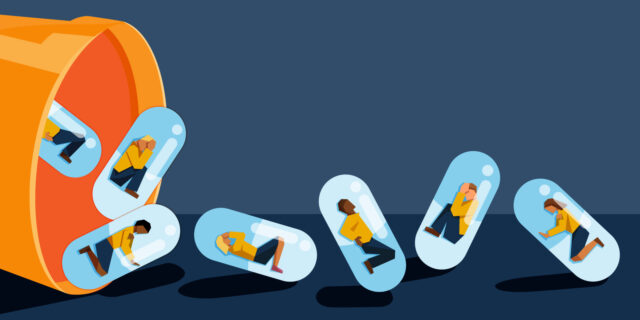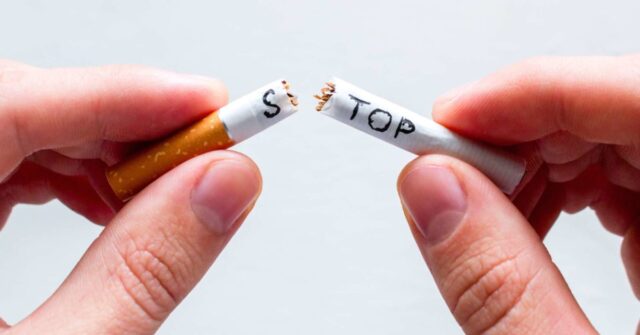
Nobody is born an addict. That is true on the literal level, of course—no one is born crying for heroin instead of mother’s milk. But it is also true on a more philosophical level.
When people think of addiction, they think of it as a thing that could never happen to them. They put up a wall and name that wall “intelligence” or “patience”. To them, there is always some positive quality that they have, and addicts lack. That is what separates them from addicts.
But just like no one is born an addict, no one is born with a label on them that necessitates that they become an addict. And while this mode of thinking is normal, it keeps people from understanding how addiction comes about, as well as the damage it does to people.
Today we are going to talk about addiction. We are going to talk about how it starts and how it develops, as well as the two ways that it can end: Either in recovery or in death.
How Does Addiction Work?
Addiction happens in four parts. You will hear some people break it down into five, six, or seven parts. Those analyses are not exactly wrong, but they are overly complicated. We are breaking it down into four parts because of what we are focusing on.
Some people break addiction down by the different effects it has on the body. They consider the addiction to be worse once certain chemical changes happen in the body. This is valid, but it has the drawback of not being very intuitive to understand or easy to explain to someone. To know more about this, you can visit AscendantNY.
That being said, let’s go by the phases of addiction as it relates to the choices you make.
Phase 1: Experimentation

Most people start with a vice, either drugs or alcohol most times, through experimentation. They want to know what will happen. While they consume the vice, they might not even be thinking about it. A lot of the time people experiment with drugs and alcohol while being social.
After all, the reason most vices exist is because they are fun. They are an activity people can do together, and they feel good to take part in. Naturally, people hear about this and try them.
The decision which defines the first phase of addiction is how you think of the vice. It might be an exciting new thing, or it might not even occur to you to think about it. The problem with both of these ways of thinking is that they are neglectful of the potential damage the vice can cause.
Not everyone who drives crashes their car. They have to be cautious though. And just the same, not everyone who drinks becomes an alcoholic. They have to drink responsibly though.
Phase 2: Regular Indulgence
After a period of experimentation, using the vice will become a regular part of one’s diet. It might start with just weekly use for pleasure, but it can turn into daily use surprisingly quickly.
The simplest way to describe this phase is that the vice becomes the go-to solution for one or more frequent problems. The easiest example is drinking. Drinking solves the problem of what to do when you have anxiety, as well as what to do when you are bored.
Soon, every problem requires a little bit of drinking to solve. The defining decision here is the decision to use the vice as a solution to a problem, regardless of the consequences. Again, we see negligence crop up as a common theme. This is not to say that all addicts are negligent. A person can be highly vigilant and still develop an addiction. It’s just that easy.
Phase 3: Using at the Cost of Other Things

Part of the reason we paused to say that negligence is not the core trait of addicts is because phase two is really the last place where negligence is at fault. After that comes the downward spiral, starting with the moment you decide to put your vice ahead of something else.
Now, this is often described as putting your vice ahead of something important, like the law or an obligation. But it can be anything. If you are a long-time football fan, skipping football to get high is also a sign you have begun a downward spiral.
We say “downward spiral” because it goes like this: You put your vice ahead of your obligation. You feel guilty and stressed over the guilt. So, you turn to what has become your most reliable solution to stress: Your vice. Suddenly, the vice is asking more and more of you.
Phase 4: Addiction
The thing is that by the time you are unable to think of any solution to most problems besides getting more of your vice, you are already so thoroughly on the path to addiction that you might as well identify it then. But there are a few key things to understand at this point.
At phase one, you can recognize the potential harm and stop using the vice. In phase two, you can spend your time doing other things. At phase three, you can recognize that your other obligation trumps the use of a substance in terms of importance. And in phase four, you can recognize that you have a problem and work to undo the damage you have done to yourself.
What we are saying is that there is no point where you are too far gone. That is something addicts fear constantly. But no matter what phase you are in, no matter how long you have been there, you can come back.
Conclusion

Treatment for addiction starts with a detox program, followed by frequent therapy. It is not easy, and it is not something you can do on your own. But it is perhaps the most worthwhile struggle.
So, if you are addicted or know someone who is, do not be afraid to ask for help.












